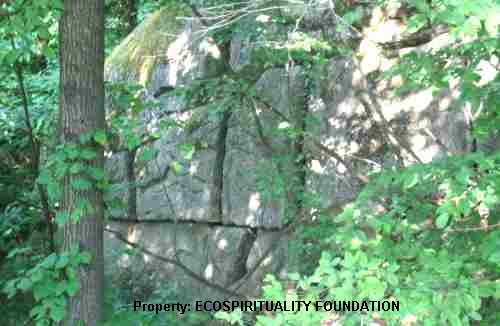|
The legendary city of Rama
The film "Shan" has many messages that can be interpreted at various levels. Beside the musical character and the travels among the traditions of the natural Peoples, there is also an invisible undercurrent that runs through the entire film.
It is the journey of the protagonists, guided by an ancient legend, in a search of the Grail.
The protagonists follow the traces of a myth of the first inhabitants of Europe: the myth of the city of Rama, a megalithic city located in Piedmont, which, according to legend, should be the origin of the Celtic tradition of Europe and should hold the secret of the Grail.
Ancient chronicles of the Susa Valley, in Piedmont, report the existence in remote epochs of the cyclopic city of Rama, which from its descriptions seems to be similar to the cities of the megalithic fortresses of Peru and Oceania. Legends of following centuries add that this mythical city was the place where the Grail was preserved.
The ancient legend refers to the myth of the fall of Phaeton. It tells of a god descended from heaven who made use of assistants of golden metal. During his stay among men, this god taught them the art of the science of alchemy and metal smelting. Later a large wheel of gold was cast made from the metal of the divine chariot.
When the god returned to heaven, he left one of his golden helpers to assist the men who had accepted his teachings.
Legends recount that one of the properties of the golden metal creature was that it could take on
various forms as it wished. One of his traces can be seen in a mediaeval legend that refers to a large cavern located inside the Musinč Mountain, in which this multi-form creature, in the form of a great golden dragon, protected a bright green gem with immense powers.
The myth of this city of Rama has survived through the centuries in the oral traditions of the local Druid culture and thanks to researchers of the beginning of the century who collected data first hand and documented confirmation of its existence.
The megalithic city of Rama rose on the slopes of the mountain Roc Maol, the ancient name of today's Rocciamelone, whose peak had been the seat of various ancient cults including last, the cult of the Jove. The city was built using large blocks of stone. Its cyclopic walls extended for some 27 kilometres and its immense stone porticos stretched along the entire length of the valley, in the direction of the towns of Bruzolo-Chianocco-Foresto on the shores of the Dora River.
Rama was not the only large construction in stone, it was part of an immense urban agglomeration that included minor constructions that reached from the town of Susa to the gates of today's city of Turin. Rama was the real and the only city existing at that time; it was the peaceful and intellectual centre of a mysterious people.
Ancient legends of the Susa Valley connect the city of Rama to the myth of the Grail and some legends report that the city guarded the Grail protected by the mysterious inhabitants. Just as still today legends and historical remains survive tied to the myth of Rama, many historical and cultural testimonies survive indicating the presence locally of the Grail.
An example is the legend of Saint Eldrado, which echoes an evident tie with the figure of Merlin and with the Arthurian cycle of the Holy Grail. The legend tells of the vicissitudes of a noble and rich Provencal lord who became a monk and was in charge of the Abbey of Novalesa; this man earned fame and great sanctity for his works and for his miracles.
Valley traditions say that the Grail in the form of an emerald is still hidden in a cave located in the heart of Monte Musiné. Defending the place, there supposedly is an enormous dragon all of gold ready to destroy with its fiery breath any intruder who might try to get into this great cavern.

The legend of Rama
"Legend says that a God in ancient times descended to Earth. His relics were collected and guarded in a temple of fire on the slopes of the Sacred Mountain. Around this temple, the city of Rama was built. In successive stages, legendary heroes enlarged and extended its power over all the known lands. But its greatness was that of custodian of ancient knowledge, the Shan, the archaic name of the Grail; a light that radiated all over the Earth and was the base of the knowledge of the Druids of the time.
The city of Rama was protected by a great dragon that interpreted the cosmic forces of the universe released by primordial Emptiness. The Dragon taught the knights of the time to fight and to dance in the wind and introduced them to the mystic knowledge of the Shan.
A great circle of stones was the dwelling place of the dragon, and it guarded inside the secret of the Shan. People came from all over the world to see the great circle of stones and to learn its secret. When the waters carried away the mother civilisation, Rama remained alone as a testimony of the ancient power of the Dragon. The millenniums erased it, but the knowledge it guarded is still alive in traditions all over the Earth.
Still today, the story goes that the circle of stones still exists, but it is invisible; it reveals itself only in the night of Samain to those who know how to seek. In that night, all the inhabitants of the place, human and not, visible and invisible, meet among the eternal majestic stones and celebrate the return to the ancestral Land."
|

